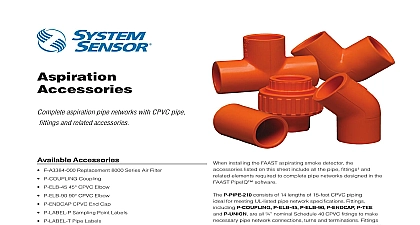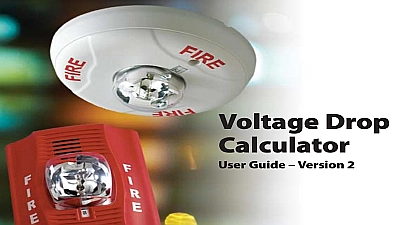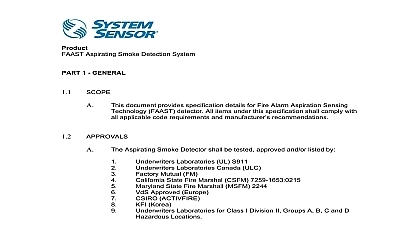System Sensor FAAST Configuration and Validation Process Guide

File Preview
Click below to download for free
Click below to download for free
File Data
| Name | system-sensor-faast-configuration-and-validation-process-guide-3768950241.pdf |
|---|---|
| Type | |
| Size | 1.16 MB |
| Downloads |
Text Preview
FAAST Configuration and Validation Process Device Guidelines correct power up sequence for an Intelligent FAAST device is to first apply external power to the FAAST device followed connecting the signaling line circuit connection Set the address on the device using the Fire Alarm Control Panel menu through the configuration tab in PipeIQ All other installation instructions should be followed per the installation manual with the device for Testing to any test of a building fire alarm system all occupants should be notified in accordance with NFPA 72 This ensures everyone is aware of what is going on and the testing can be conducted efficiently Typically a team of two performs of a FAAST device with one technician remaining at the detector to verify test results while the other technician intro the canned smoke Before these tests are carried out ensure that the room or area being protected is in its operational in terms of airflow temperature and cleanliness Any air handling units should be running all floor and ceiling tiles be installed and any equipment producing a heat load should be in its normal operating mode Ensure compliance to the relevant standard is being achieved and that sample holes meet the minimum requirements Ensure the installation matches the design created in PipeIQ Perform a visual inspection of the physical installation checking adequate size batteries are used piping is securely and installed and all holes are correct in number spacing orientation and size Hole size can be verified a drill bit or ruler Be aware of the local codes and standards as applicable to the customer site Required for Testing Procedure for FAAST PipeIQ Pipe Layout Report for unit under test Aerosol smoke for general smoke detector testing Home Safeguard Industries Model 25S or equivalent Stopwatch capable of measuring 1 second intervals Ensure that the local fire panel and any automatic extinguishing or suppressant systems are either disconnected or from external reporting equipment Introducing smoke will cause relays and signals to activate those systems the system is in isolate mode that the system is working normally by observing the user interface Locate the Details table from the PipeIQ Pipe Layout Report noting the transport time for the farthest hole on pipe network on the FAAST commissioning form see screenshot in Appendix A on page 2 The farthest hole to be tested for transport time All other holes need to be verified for airflow Introduce canned smoke Home Safeguard Industries Model 25S or equivalent directly into the sampling hole in to sample hole for a duration of 2 seconds at a distance of 6 inches from the sample hole Start the timer once smoke has been introduced Stop the timer once the first particulate bar is illuminated on the front of the device above what was displayed during device operation The device need not go into alarm to verify the transport time an increase on the particu meter is a successful measurement of transport time specifications subject to change without notice firealarmresources com Configuration and Validation Process CONT Compare the observed transport time with the results on the Pipe Layout report from PipeIQ If there is more than 5 10 discrepancy verify the sample hole quantity sizes location and the integrity of pipe and that the installed network is identical to the PipeIQ Pipe Layout report Once transport times for the farthest sample points are verified test the remaining holes for airflow by introducing into each hole and verifying a response at the device or panel Transport times are not required on each of remaining holes only a verification that air is flowing If it is required by the Authority Having Jurisdiction to verify the sensitivity of the a sampling port a testing device that a controlled level of smoke such as TruTest by SDI or similar is needed to test and provide the ft sensitivity at the hole Make sure to re connect the local fire panel and any automatic extinguishing or suppressant systems after successful of the test A specifications subject to change without notice firealarmresources com Device Air Sampling Type Detector Commissioning Form Name Name Address Name Contact information Agent Contact information Representative Contact information information Checked DOCUMENTS of Detector Validation Form Layout Report system Bill of Material Form for each FAAST device labeled points labeled required forms Signature Agent Signature NO NO NO NO NO NO NO name 1 or Ground Floor etc circle as appropriate STANDARD OPEN AREA COLD AREA UNDER FLOOR HIGH AIR EXCHANGE IN DUCT CAPILLARY CEILING VOIDS Ambient Temperature NORMAL HIGH CLEAN HARSH of sampling points installation Drawings Available the system installed in accordance with the design the power supply installed properly any variations Class of the detector circle as appropriate UL EN54 VEWFD EWFD SFD or Class A Class B Class C sensitivity of the sampling port at FIRE 1 obscuration ft or meter Address for addressable variants In case of applications where high humidity condensation is present the use the water traps is highly recommended NO NO NO Device Commissioning Form CONT HOLE DELAY applicable TIMES test only at the farthest sampling point No No No No TESTS VERIFICATION 1 2 1 2 1 2 1 2 1 2 1 2 1 2 1 2 Alert 1 2 1 2 Values for reference only PARAMETER VERIFICATION calculations attached airtight and permanently affixed detector communication to the Fire Alarm Panel tested airflow through all holes flow test verified flow test verified


